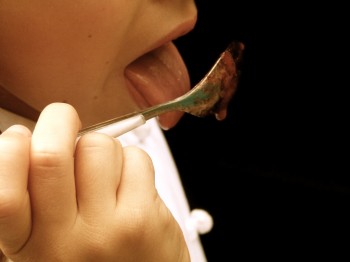
Pain perdu:
here is to finding your bread with jam and without the “préservatifs”
Pain perdu literally means “lost bread” but the loose translation means to make use of old bread. To Americans “pain perdu” is “French bread” and eaten at breakfast with maple syrup. In France pain perdu is enjoyed as a dessert or by children for their afternoon goûter. It is not served with syrup but with homemade confiture(or jam as we know it). While many recipes embellish pain perdu with nuts, liquors, zests, fancy butters and/or syrups (and that is all good) we are making pain perdu with classic French simplicity and this easy and delicious dessert is this week’s simple pleasure.
French cuisine often makes use of day old bread whether it be in a panade or a stuffing.Pain perdu is a similar concept for it is the re-hydrating of old bread by soaking it in mixed eggs. However, the bread is then fried in a little butter rather than being mixed with minced meat or use as a farce. Pain perdu typically is made with pain de mie or pullman’s bread both of which are sandwich breads but if you want something a little richer, you can use challah or brioche which contain more butter and eggs thanpain de mie. Painperduis also a good way to make use of day old croissants. Whatever bread you choose to use, do not use fresh bread: it is not only a waste but old bread makes better pain perdubecause fresh bread too readily absorbs the eggs which can over-saturate your pain perdu making it a soggy disaster which is better lost than found.
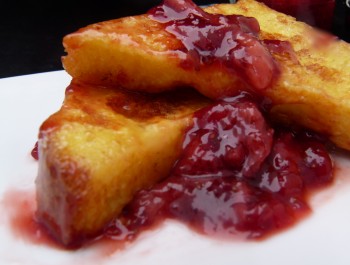
Strawberry confiture is the most popular jam to accompany pain perdu. This is not surprising since the dessert is generally enjoyed in the period after Easter which is also the beginning of strawberry season. If you do not want to use strawberries, substitute cherries or apricots, both of which are delicious and are now coming in season.
Myconfiture recipe is simple and has been a consistent crowd pleaser in my croissant and jam classes. I significantly reduced the sugar content that is generally found in most recipes and you can reduce it even further if your fruit is very sweet. It is simple to make and the jam will last for weeks in the refrigerator (it also makes wonderful gifts). Do not use overripe fruit as it will collapse while it is simmering. If you are unable to purchase fresh fruit, you can use frozen.
So I imagine you are thinking “what does pain perdu and confiture have to do with “préservatifs” and what are “préservatifs” in any event? I will tell you. I was having a conversation with a friend of mine and we were discussing, in French, confiture and making confiture and things that are put in prepared and packaged food generally. The conversation went roughly as follows:
ME: « Je n’achète pas d’aliments avec des préservatifs … ce n’est pas nécessaire. J’étais étonnée quand j’ai lu les étiquettes sur les pots de confiture et que j’ai vu qu’il y avait des préservatifs là-dedans». (I do not buy food with preservatives. It is not necessary. I was surprised when I looked at the labels and saw that there were preservatives in the jam.)
[Awkward silence ensured and he looked at me]
HIM: « Quoi ? » (what?)
ME: « Tu sais, le truc qu’on met dans la confiture pour la conserver plus longtemps » (You know, the stuff in jam that makes it last longer. )
HIM: [He blushed and a polite smile suppressed his laughter]. «Lisa, je crois que tu veux dire “conservateurs”, les « préservatifs sont des capotes » (Lisa, I believe that you mean “conservateurs”, “preservatives”, in French, are condoms).
[More awkward silence and then it was me who blushed as I recounted in my head how many times I have incorrectly and unknowingly used that word on my travels in France or the several times I referred to jam as “preservatives” and how that this was the first time someone corrected me].
We both laughed and a few weeks later there it was in the metro station a large public service announcement poster in my face advocating the use of “preservatifs.” They were not talking about jam or food.
So here is to you: the beneficiary of my jam recipe as well as one of my many French faux pas lessons. I hope when you make this recipe without the addition of those unnecessary “preservatives” you will smile. À table !
Je vous souhaite un bon appétit !
LM
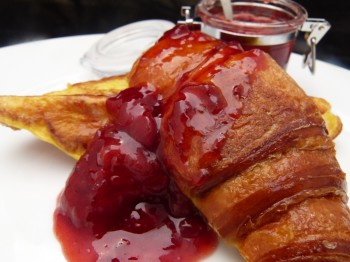
French toast with strawberry jam
(pain perdu et de la confiture de fraises)
stats:
serves 4 with jam leftover
what you need:
jam
1 pound strawberries (yield)
10 ounces granulated sugar
2 tablespoons fresh lemon juice
1/4 ounce powdered pectin (or 3/4 ounce liquid pectin)
bread
4 slices day old bread (pain de mie, brioche or croissants)
unsalted butter (as needed)
2 eggs, mixed
1 tablespoon milk (or heavy cream)
1 teaspoon vanilla extract
how to:
jam
- Macerate Fruit. Wash strawberries and completely dry berries. Remove stems and cut in half if large. Weigh. Toss with lemon juice and granulated sugar. Place in refrigerator overnight and let strawberries macerate.
- Bring To A Boil. Remove from the refrigerator and place the macerated strawberries in a saucepan. Bring the contents to a boil. Skim off any white foam so jam is not discolored.
- Simmer. Once you reach a boil, reduce heat and simmer. Add pectin. Skim jam often. Continue to simmer over a low-medium flame until you reach à la nappé stage. You can test doneness one of two ways: pinch some of the jam between your thumb and pointer finger and if sticky, it is done. Alternatively, put a few drops of the confiture on a frozen plate. If the drops stay drops and do not spread on the plate, it is done. Generally, you should reach “thread stage” (230 degrees Fahrenheit).
bread
- Prepare Bread. Slice bread into slices one inch thick.
- Prepare Batter. In a separate bowl, mix together eggs, milk, and extract.
- Dip Bread In Egg Mixture. Coat the bread slices by dipping each side in the egg mixture.
- Melt Butter. Heat a griddle or a fry-pan or medium-high flame. Add butter (add only enough butter to the griddle or the pan to prevent the bread from sticking).
- Griddle/Fry Bread. Cook bread until golden brown on each side
- Garnish. Top with a dollop of jam.
- Serve. Serve warm
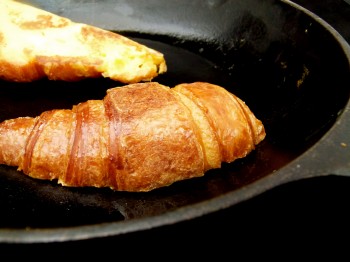
Tags: confiture, french toast, jam, pain perdu, simple pleasures. french cooking recipes, strawberries



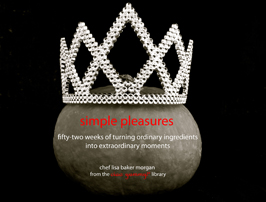



Leave a Reply